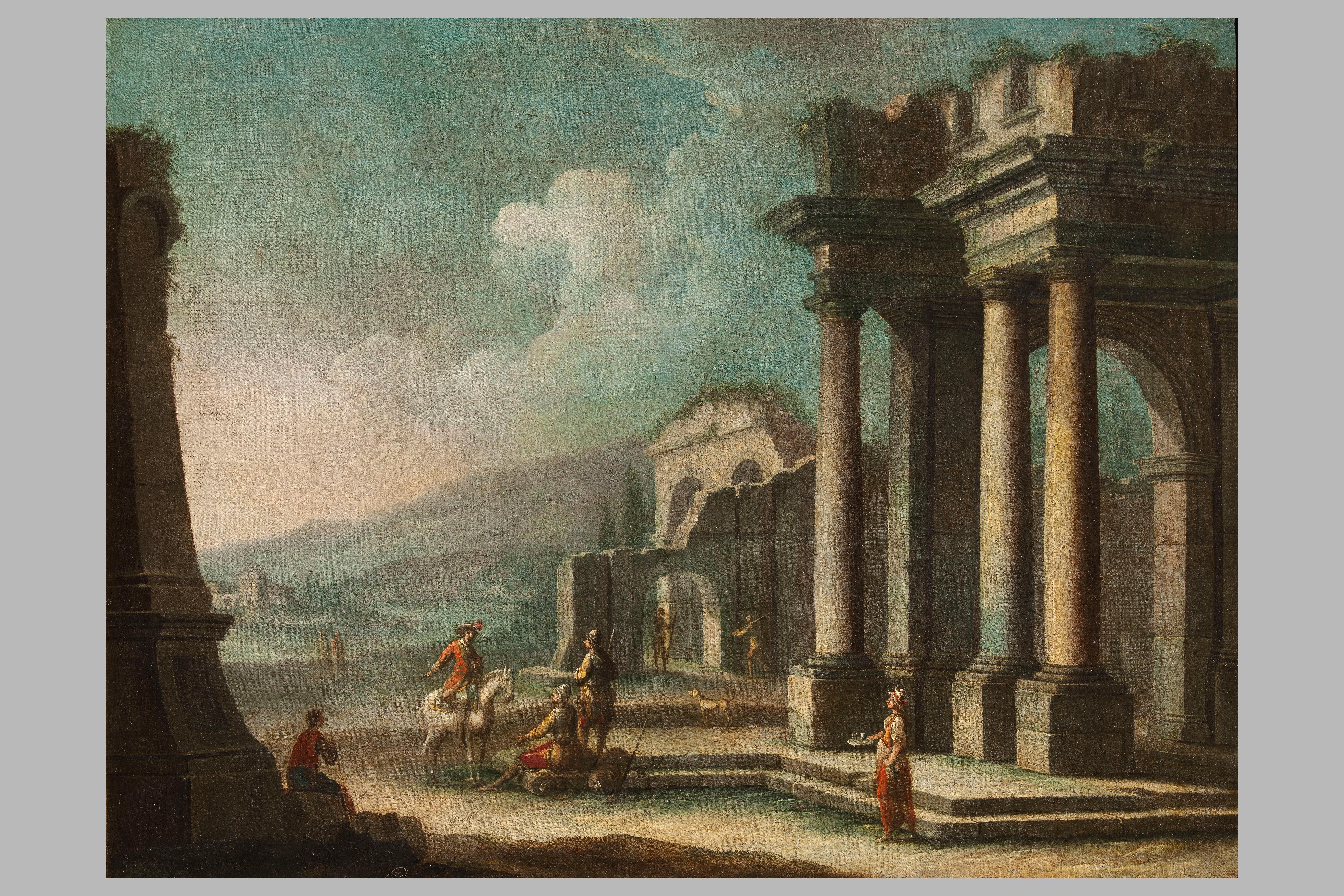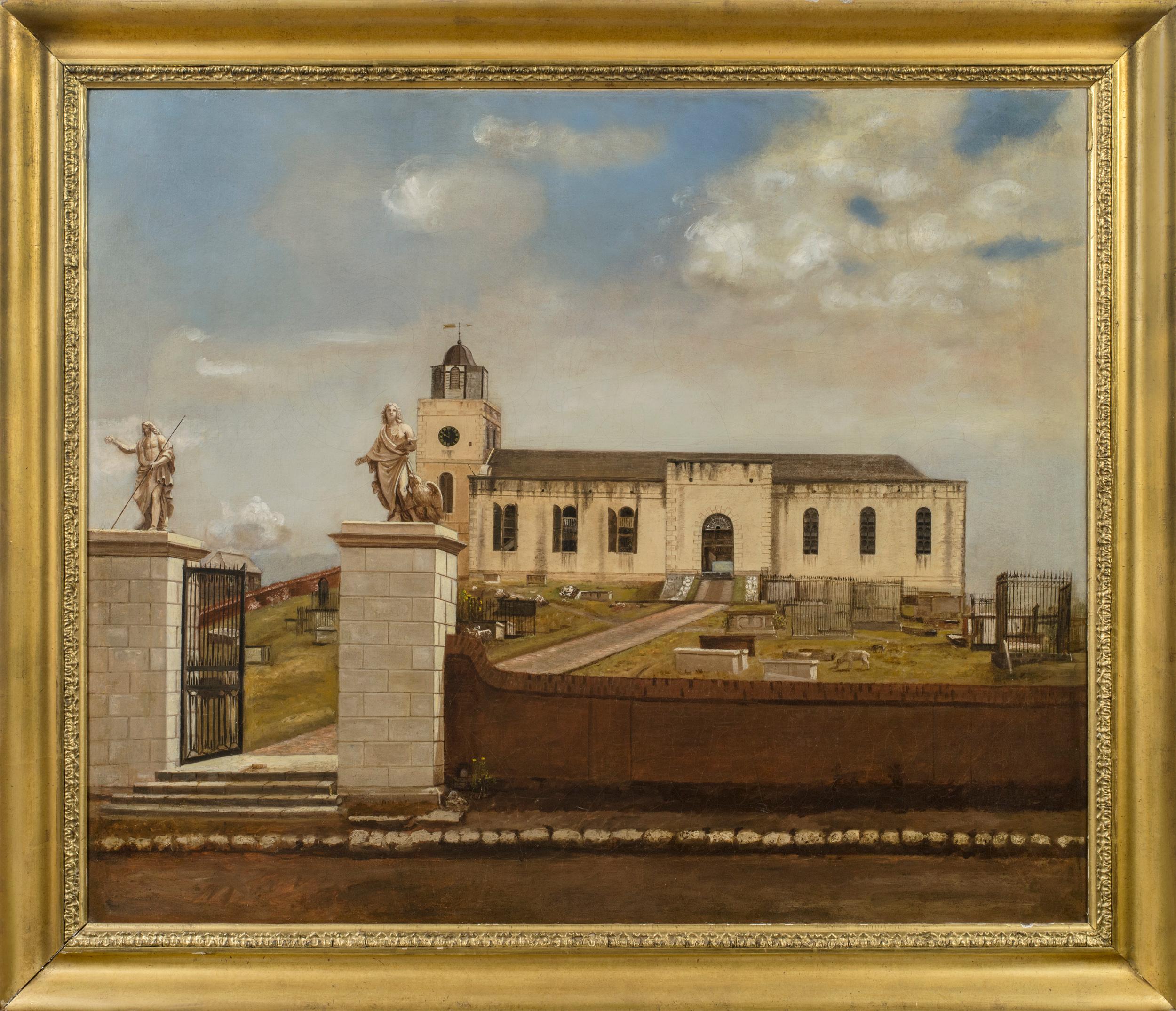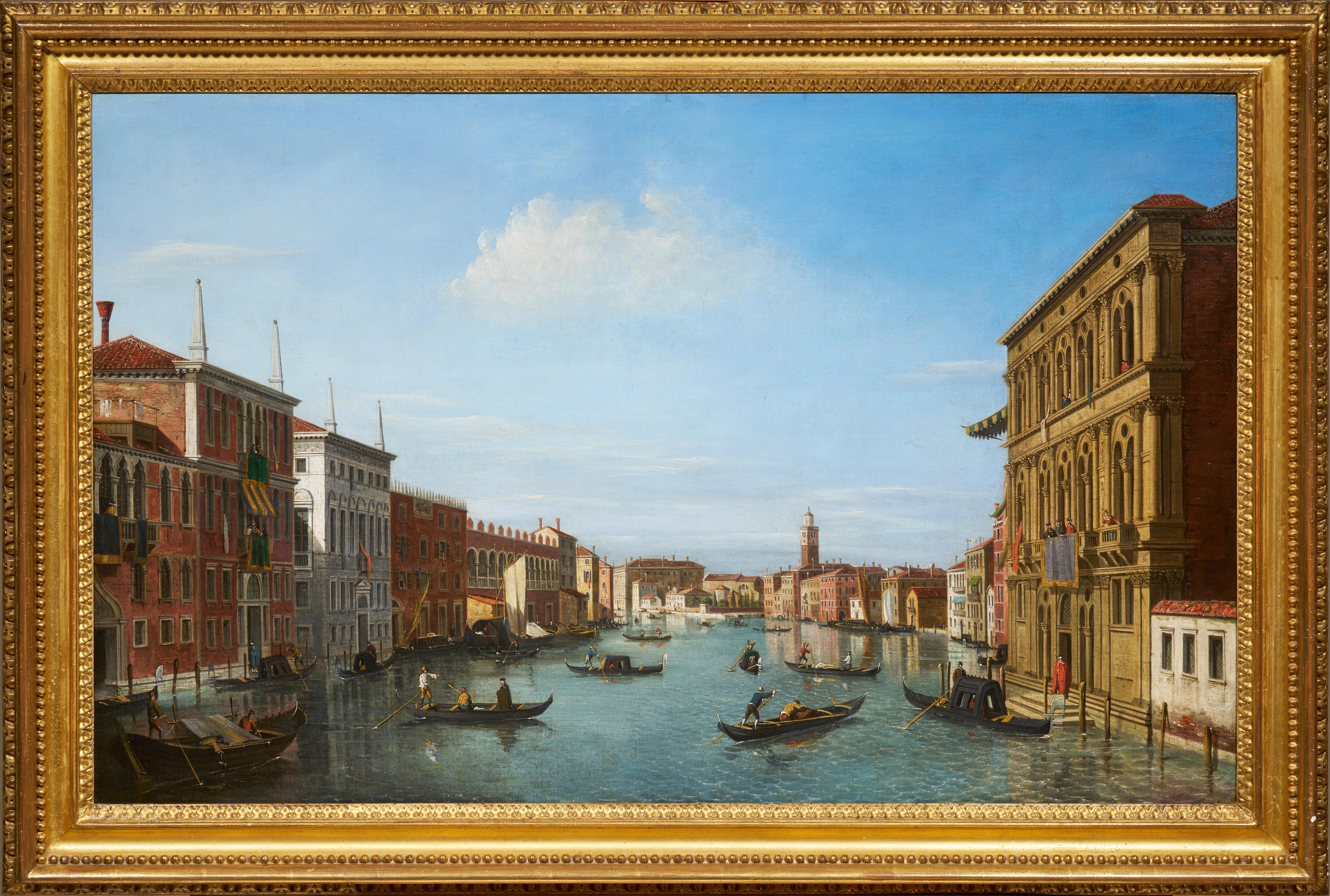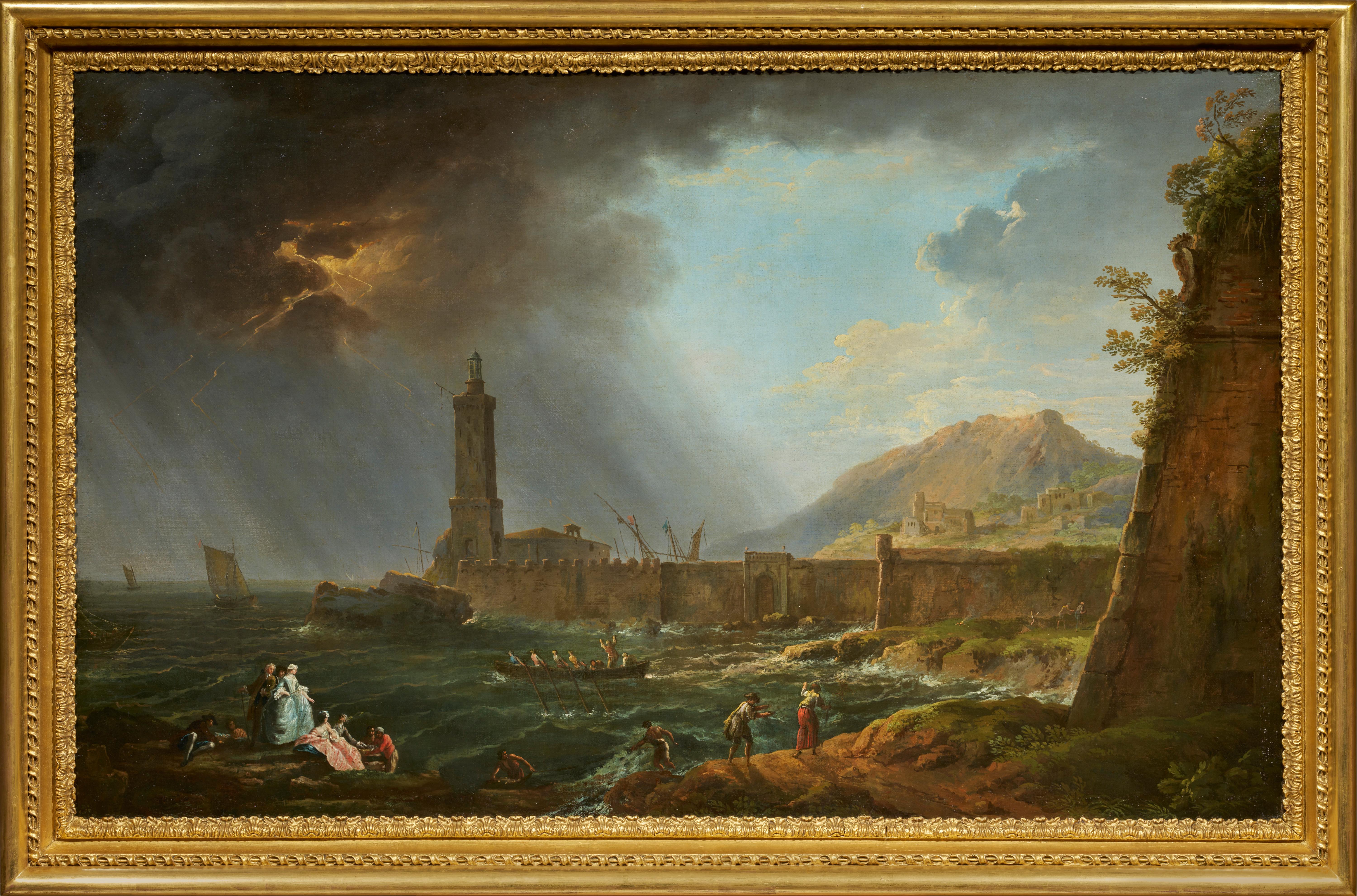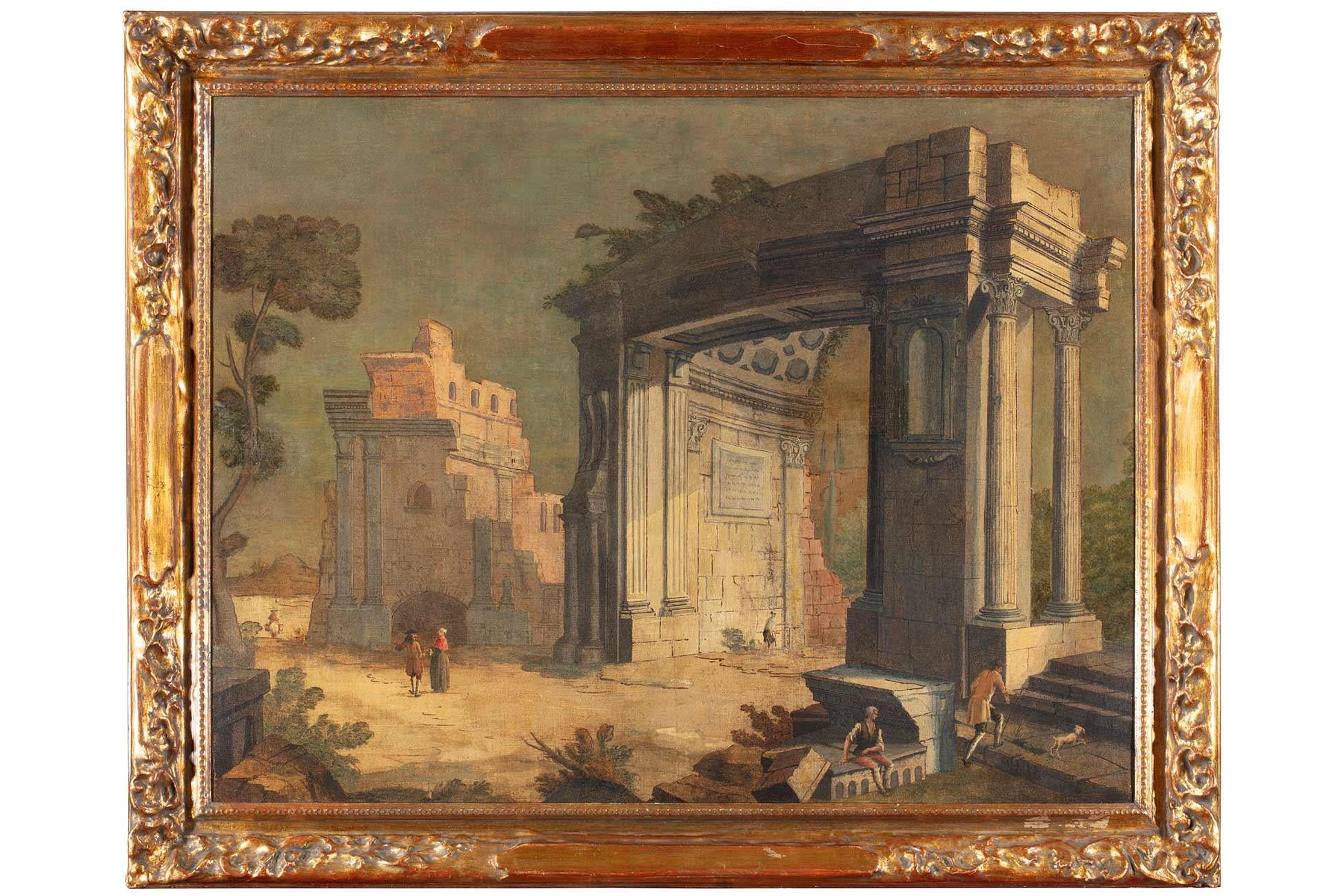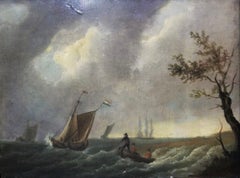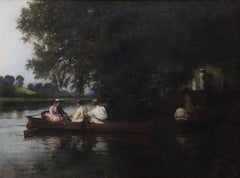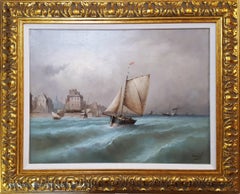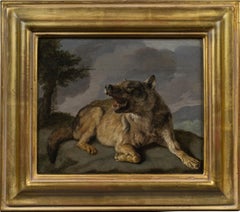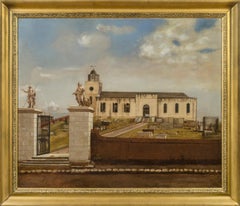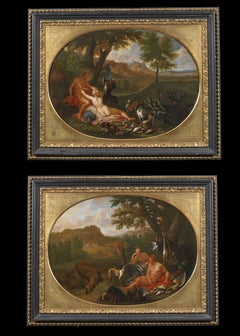
San Giorgio Maggiore, Venice
Want more images or videos?
Request additional images or videos from the seller
1 of 14
(In the manner of) Franceso Lazzaro GuardiSan Giorgio Maggiore, VeniceCirca: 1750-70
Circa: 1750-70
About the Item
- Creator:(In the manner of) Franceso Lazzaro Guardi
- Creation Year:Circa: 1750-70
- Dimensions:Height: 21.5 in (54.61 cm)Width: 26.5 in (67.31 cm)
- Medium:
- Movement & Style:
- Period:1750-1759
- Condition:
- Gallery Location:Saint Augustine, FL
- Reference Number:1stDibs: LU12122281521
About the Seller
5.0
Platinum Seller
These expertly vetted sellers are 1stDibs' most experienced sellers and are rated highest by our customers.
Established in 1978
1stDibs seller since 2015
1,219 sales on 1stDibs
More From This SellerView All
- Dutch Fishing Vessels in Storm /// Francis Swaine Maritime Seascape Antique ShipBy Francis SwaineLocated in Saint Augustine, FLArtist: Francis Swaine (English, 1725-1782) Title: "Dutch Fishing Vessels in Storm" *No signature found Circa: 1770 Medium: Original Oil Painting on wood panel Framing: Framed in a Louis XV style gold moulding Framed size: 10.63" x 12.63" Panel size (irregular margins): 6" x 7.75" Condition: One small restored spot upper left. Cosmetic wear to frame. In otherwise very good condition Notes: Provenance: private collection - London, England; acquired from art dealer Ernest Alden, London, England retaining his original gallery label on verso. Metal plaque inscribed "F. Swaine 1740-1782", (active dates), attached to frame bottom center. Ernest William Alden (1866-1947) was recorded in successive censuses, in 1881 as a picture mounter (card maker), age 14, living at 9 Bloomsbury St, with several other members of his family also given as picture mounters, including his father, James; in 1891 as a picture frame mounter with his father and family at 208 Shaftesbury Avenue; in 1901 as a photographer and picture dealer at 39 King’s Road, Chelsea; and in 1911 again at 39 King’s Road but the census form is damaged. His listing in trade directories, initially as picture mount cutter, changed to picture framemaker from 1904, soon after he set up in the King’s Road. He advertised his large stock of second-hand swept and other frames, claiming to have been established in 1893 (The Year’s Art 1913). Alden died in Chelsea in 1947, leaving effects worth £5,011, with probate granted to his widow Lily Alden and to Marjorie Frances Alden. Two of his younger brothers, Henry Cyril Alden (1871-1939) and James Preston Alden (1876-1960), were also active as picture framemakers. - National Portrait Gallery, London, England. Biography: Francis Swaine (1725–1782) was a British marine painter. He was born in 1725, and christened on 7 October of that year at St Dunstan's, Stepney, London. His parents were named Francis Swaine and Ann Joel. In 1735 the elder Francis Swaine, the marine painter's father, applied in writing to the Commissioners of His Majesty's Navy for employment as a Navy Messenger, in succession to Mr William Wyatt. He mentions that he had served "upwards of twenty eight years" in the Navy, and that his father had died Purser of the Royal Katherine. He mentions also that he had carried out "little labours in drawing", and that he at that time had five small children. The first-born of these children was the Francis Swaine who became the marine painter. The elder Swaine was duly employed as a Navy Messenger. He served for 20 years and died on 10 October 1755, aged 64. Swaine is said to have been influenced by the style of Van de Velde. There is no clear evidence of this alleged influence. The suggestion that Swaine may have been a pupil of Charles Brooking...Category
1770s Old Masters Landscape Paintings
MaterialsPaint, Oil, Panel, Wood Panel, Board
- Promenade en Bateau en Soirée (Evening Boat Ride) /// Impressionist Painting ArtLocated in Saint Augustine, FLArtist: Frank Dicey (English, c. 1838-1888) Title: "Promenade en Bateau en Soirée (Evening Boat Ride)" *Signed by Dicey lower left Circa: 1880 Medium: Original Oil Painting on Canvas Framing: Recently framed within a black and gold Baroque style moulding with linen liner from Holland and and a gold filet Framed size: 24.75" x 30.75" Canvas size: 18.25" x 24.25" Condition: Relined. Minor craquelure. In excellent condition Notes: Provenance: private collection - Boston, MA. Biography: Frank Dicey (English, c. 1838-1888) was a figure painter born in London. He exhibited between 1880 and 1888 at the Royal Academy, Royal Institute of Oil Painters, Royal Institute of Painters in Water Colours and Grosvenor Gallery in London, as well as at the Glasgow Institute of the Fine Arts, Royal Society of Artists in Birmingham, Walker Art Gallery in Liverpool and Manchester City Art Gallery. Dicey also exhibited with the Royal Society of British Artists, a society which nominated James Whistler its President in 1886. He was elected a member of The Arts Club in 1866 and a member of the Royal Institute of Oil Painters in 1883. In 1874/1876, Dicey's name was included by James Whistler in a list which may have been a guest list for the private view of Whistler's Pall Mall exhibition of 1874, or a subscription list for Whistler's Venice etchings...Category
1880s Impressionist Landscape Paintings
MaterialsCanvas, Paint, Oil
- Vue de Venise (View of Venice) /// Antique French Boat Ship Seascape PaintingLocated in Saint Augustine, FLArtist: Inoel (French, Active: Late 19th Century) Title: “Vue de Venise (View of Venice)” *Signed by Inoel lower right Circa: 1875 Medium: Original Oil ...Category
1870s Victorian Landscape Paintings
MaterialsCanvas, Oil, Paint
$1,800 Sale Price60% Off - Fishermen Unloading the Day's Catch, Dover /// Antique Victorian Ship SeascapeLocated in Saint Augustine, FLArtist: John Cheltenham Wake (English, 1837-1882) Title: "Fishermen Unloading the Day's Catch, Dover" *Signed and dated by Wake lower left Year: 1874 Medium: Original Oil Painting on Canvas Framing: Recently framed in a green and gold ornate gesso moulding Framed size: 16.5" x 24.5" Canvas size: 12" x 20" Condition: One area in upper left sky professionally restored. In otherwise very good condition Notes: Provenance: private collection - Vero Beach...Category
1870s Victorian Landscape Paintings
MaterialsCanvas, Paint, Oil, Gesso
- Blue Ridge Blue Bird /// Virginia Countryside Landscape Painting Horse Farm ArtBy Jack Graves IIILocated in Saint Augustine, FLArtist: Jack Graves III (American, 1988-) Title: "Blue Ridge Blue Bird" Series: Eclecticism *Signed by Graves lower right. It is also signed, titled, and dated on verso Year: 2024 ...Category
2010s Contemporary Landscape Paintings
MaterialsPaint, Canvas, Acrylic
- House-Cat-Mouse /// Contemporary Landscape Spooky Girl Countryside Moon Farm ArtBy Jack Graves IIILocated in Saint Augustine, FLArtist: Jack Graves III (American, 1988-) Title: "House-Cat-Mouse" Series: Americana *Signed by Graves lower left. It is also signed, titled, and dated on verso Year: 2021 Medium: O...Category
2010s Contemporary Landscape Paintings
MaterialsAcrylic, Canvas, Paint
You May Also Like
- A WolfLocated in New York, NYProvenance: The Marchesi Strozzi, Palazzo Strozzi, Florence Sale, Christie’s, London, May 20, 1993, lot 315, as by Carl Borromaus Andreas Ruthart...Category
17th Century Old Masters Animal Paintings
MaterialsCanvas, Paper, Oil
- View of St. John’s Cathedral, AntiguaLocated in New York, NYProvenance: Robert Hollberton, Antigua, ca. 1841 Private Collection, New York The present painting depicts Old St. John’s Cathedral on the island of Antigua. The church was erected in the 1720s on the designs of the architect Robert Cullen. It measured 130 feet by 50 feet with north and south porches 23 x 20 ½ feet. The tower, 50 feet high with its cupola, was added in 1789. The church was elevated to the status of a cathedral, but disaster struck in the form of an earthquake that destroyed the building on 8 February 1843. A memorandum of that date relates the event: “On Wednesday, 8th February, 1843, this island was visited by a most terrific and destructive earthquake. At twenty minutes before eleven o’clock in the forenoon, while the bell was ringing for prayers, and the venerable Robert Holberton was in the vestry-room, awaiting the arrival of persons to have their marriage solemnized, before the commencement of the morning service, the whole edifice, from one end to the other, was suddenly and violently agitated. Every one within the church, after the first shock, was compelled to escape for his life. The tower was rent from the top to the bottom; the north dial of the clock precipitated to the ground with a dreadful crash; the east parapet wall of the tower thrown upon the roof of the church; almost the whole of the north-west wall by the north gallery fell out in a mass; the north-east wall was protruded beyond the perpendicular; the altar-piece, the public monument erected to the memory of lord Lavington, and the private monuments, hearing the names of Kelsick, Warner, Otley, and Atkinson, fell down piecemeal inside; a large portion of the top of the east wall fell, and the whole of the south-east wall was precipitated into the churchyard, carrying along with it two of the cast-iron windows, while the other six remained projecting from the walls in which they had been originally inserted; a large pile of heavy cut stones and masses of brick fell down at the south and at the north doors; seven of the large frontpipes of the organ were thrown out by the violence of the shock, and many of the metal and wooden pipes within displaced; the massive basin of the font was tossed from the pedestal on which it rested, and pitched upon the pavement beneath uninjured. Thus, within the space of three minutes, this church was reduced to a pile of crumbling ruins; the walls that were left standing being rent in every part, the main roof only remaining sound, being supported by the hard wood pillars.” The entrance from the southern side into the cathedral, which was erected in 1789, included two imposing statues, one of Saint John the Divine and the other of Saint John the Baptist in flowing robes. It is said that these statues were confiscated by the British Navy from the French ship HMS Temple in Martinique waters in 1756 during the Seven Years’ War and moved to the church. The statues are still in situ and can be seen today, much as they appeared in Bisbee’s painting, but with the new cathedral in the background (Fig. 1). Little is known of the career of Ezra Bisbee. He was born in Sag Harbor, New York in 1808 and appears to have had a career as a political cartoonist and a printmaker. His handsome Portrait of President Andrew Jackson is dated 1833, and several political lithographs...Category
19th Century Old Masters Landscape Paintings
MaterialsCanvas, Oil
- 18th Century Galanti Scenes Van Limborch Rest Hunting Oil on Canvas Green RedLocated in Sanremo, ITPair of oval paintings measuring 66 x 89 cm without frame and 90 x 115 cm with coeval frame depicting two gallant moments during a rest from hunting by painter Hendrik Van Limborch (...Category
1730s Old Masters Landscape Paintings
MaterialsCanvas, Oil
- Early oil depicting the Great Fire of LondonLocated in London, GBThe Great Fire of London in September 1666 was one of the greatest disasters in the city’s history. The City, with its wooden houses crowded together in narrow streets, was a natural fire risk, and predictions that London would burn down became a shocking reality. The fire began in a bakery in Pudding Lane, an area near the Thames teeming with warehouses and shops full of flammable materials, such as timber, oil, coal, pitch and turpentine. Inevitably the fire spread rapidly from this area into the City. Our painting depicts the impact of the fire on those who were caught in it and creates a very dramatic impression of what the fire was like. Closer inspection reveals a scene of chaos and panic with people running out of the gates. It shows Cripplegate in the north of the City, with St Giles without Cripplegate to its left, in flames (on the site of the present day Barbican). The painting probably represents the fire on the night of Tuesday 4 September, when four-fifths of the City was burning at once, including St Paul's Cathedral. Old St Paul’s can be seen to the right of the canvas, the medieval church with its thick stone walls, was considered a place of safety, but the building was covered in wooden scaffolding as it was in the midst of being restored by the then little known architect, Christopher Wren and caught fire. Our painting seems to depict a specific moment on the Tuesday night when the lead on St Paul’s caught fire and, as the diarist John Evelyn described: ‘the stones of Paul’s flew like grenades, the melting lead running down the streets in a stream and the very pavements glowing with the firey redness, so as no horse, nor man, was able to tread on them.’ Although the loss of life was minimal, some accounts record only sixteen perished, the magnitude of the property loss was shocking – some four hundred and thirty acres, about eighty per cent of the City proper was destroyed, including over thirteen thousand houses, eighty-nine churches, and fifty-two Guild Halls. Thousands were homeless and financially ruined. The Great Fire, and the subsequent fire of 1676, which destroyed over six hundred houses south of the Thames, changed the appearance of London forever. The one constructive outcome of the Great Fire was that the plague, which had devastated the population of London since 1665, diminished greatly, due to the mass death of the plague-carrying rats in the blaze. The fire was widely reported in eyewitness accounts, newspapers, letters and diaries. Samuel Pepys recorded climbing the steeple of Barking Church from which he viewed the destroyed City: ‘the saddest sight of desolation that I ever saw.’ There was an official enquiry into the causes of the fire, petitions to the King and Lord Mayor to rebuild, new legislation and building Acts. Naturally, the fire became a dramatic and extremely popular subject for painters and engravers. A group of works relatively closely related to the present picture have been traditionally ascribed to Jan Griffier...Category
17th Century Old Masters Landscape Paintings
MaterialsOil, Canvas
- View of the Grand Canal, a painting by William James, after CanalettoBy William JamesLocated in PARIS, FRAlthough we have little bibliographical information on William James, we know that he was trained by Canaletto during the painter's stay in England between 1746 and 1755. Although he may never have been to Venice, William James remained under the influence of his master for a long time and became known for his paintings inspired by Canaletto's artworks. In this painting, William James is inspired by one of the twelve views of the Grand Canal painted by Canaletto for Joseph Smith, or more precisely by the engraving made by Antonio Visentini in 1735 after this painting. He delivers a very personal version, vibrant with colours, in which he brilliantly reproduces the moving surface of the sea, animated by the ever-changing traffic of the gondolas. 1. William James, the English follower...Category
Mid-18th Century Old Masters Landscape Paintings
MaterialsCanvas, Oil
- The Arrival of the Storm, a painting by the school of Claude-Joseph VernetBy Claude-Joseph VernetLocated in PARIS, FRDuring his stay in Italy from 1734 to 1752, Joseph Vernet made several trips to Naples between 1737 and 1746, where he painted numerous maritime scenes. The pre...Category
1770s Old Masters Landscape Paintings
MaterialsCanvas, Oil
Recently Viewed
View AllMore Ways To Browse
Gold Tree Of Life
African Post
British Victorian Oil Painting
Western Impressionists
Impressionist Western Painting
Brooklyn Park
Artist Present Work To Auction
Impressionist Water Color Paintings
Dark Forest
Vintage Landscape Illustration
Modern Art Urban Landscape
French Church Paintings
St Mary
Painting On Board Antique
Fall Landscape Oil Painting
Richard George
Scottish Landscape Oil
Oil Painting 1911
